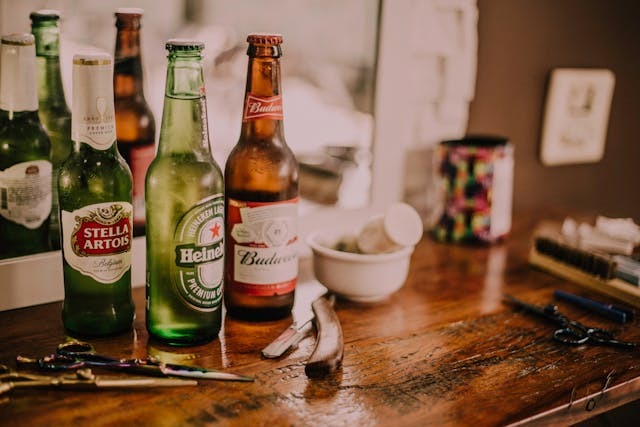
Alcohol and Health in the Fitness Industry
In the fitness world, alcohol can be a strange paradox.
On one hand, we coach people to prioritize sleep, recovery, nutrition, and longevity. On the other hand, we host happy hours, raise a glass after events, and sometimes treat drinking like a badge of honor for hard work done in the gym.
So, where should gym professionals stand on the issue of alcohol?
Not with scare tactics. Not with shame. But with clarity.
Here’s the science, the nuance, and the leadership lens you need to help your community make informed choices—and to build a gym culture that doesn’t accidentally undermine the very health we’re here to promote.
Alcohol 101: What It Brings to the Table
From a nutritional standpoint, alcohol is calorically dense, with 7 kcal/gram, second only to fat. But it’s empty energy—no protein, vitamins, or recovery benefits—just liquid calories.
Worse, alcohol’s metabolic byproducts (like acetaldehyde) are toxic and carcinogenic. While someone might argue “it’s just one drink,” repeated exposure adds up, especially when habits are daily.
In some clients, alcohol accounts for up to 25% of their total caloric intake without them realizing it.
The Research: Why It’s Messy but Meaningful
Most of what we know about alcohol and health comes from observational studies, not randomized trials (because you can’t ethically assign people to drink daily for 20 years).
For decades, we observed a J-shaped curve—moderate drinkers appeared to have lower mortality rates than abstainers. This made red wine seem to be a heart-healthy choice.
But newer, larger studies and Mendelian randomization (a genetics-based method that mimics randomized trials) tell a different story:
Even moderate intake increases risk. There’s no dip. Just a straight line: more drinking = more risk.
A massive 2023 analysis of 5 million people found that risk starts increasing around three drinks per day and jumps significantly at four drinks or more.
So if there’s a safe zone, it’s small, and there’s no health upside, just possibly less harm at low doses.
What Alcohol Does to the Body (and Why It Matters in the Gym)
Here’s how alcohol undercuts the goals most gyms are built around:
Muscle Recovery: Alcohol disrupts protein synthesis. It’s anti-gains.
Sleep Quality: Even 1–2 drinks reduce REM sleep and increase night wakings.
Mental Health: It worsens anxiety, especially during withdrawal periods (the next morning or Monday after a bender).
Metabolism and Weight: It adds calories and lowers inhibition around food.
Injury and Performance: Coordination, balance, and reaction time all take a hit, with effects lasting into the next training day.
Also critical: women are more vulnerable due to biology, not just body weight. Their bodies process alcohol more slowly and experience damage (like liver disease or cancer) at lower levels of intake.
Leadership Challenge: Are We Sending Mixed Messages?
There’s a cultural blind spot in the industry. We sell health and resilience, but often default to alcohol-centric celebrations. Post-Murph beers. Friday wine & yoga. Anniversary parties with open bars.
The problem? Our actions carry weight. When we normalize or glamorize alcohol, it creates social pressure, undermines our health-first message, and can alienate members who are sober-curious or in recovery.
This isn’t about being anti-alcohol. It’s about being intentional.
How to Create a Healthier Gym Culture (Without Killing the Vibe)
You don’t have to ban booze or cancel every party. Just shift the focus. Here are a few easy wins:
1. Add Non-Alcoholic Options
Include mocktails or sparkling water at events. Companies like Athletic Brewing and Hoplark are leading a booming non-alcoholic market.
2. Host Alcohol-Free Events
Think hikes, bonfires, game nights, or fitness + breakfast events. Build a community without alcohol as the centerpiece.
3. Talk About It Transparently
Use newsletters, seminars, or casual coaching moments to address how alcohol affects recovery, sleep, performance, and goals.
4. Lead by Example
As a coach or owner, your habits shape the culture. Model what “fit and mindful” looks like—even if you drink occasionally.
The Bottom Line: What to Tell Your Team and Clients
There are no proven health benefits to alcohol.
Low intake (1–2 drinks, a few times a month) is low risk, not no risk.
High and binge drinking significantly raise disease and mortality risk.
Women, genetics, and personal context all affect risk tolerance.
Alcohol may enhance moments, but it can quietly erode progress.
Final Thought: Fitness is About Empowerment
Our job isn’t to police behavior—it’s to help people make better choices. Alcohol will always be a part of some people’s lives. That’s fine.
But if we’re serious about health and performance, we owe it to our communities to speak, model balance, and create space for social connection that doesn’t rely on pouring a drink.
The new playbook? Celebrate effort. Build rituals. Lift each other, without needing a buzz to do it.
See you in the gym!


